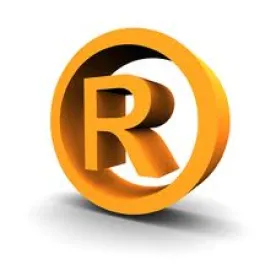Takeaway: To support a proposed motion to amend, written description support must be shown in the original disclosure of the application that issued as the challenged patent rather than in the issued patent itself or a related priority document.
In its Final Written Decision, ordered that each of challenged claims 1-15 of the ‘171 patent are unpatentable. The Board denied Patent Owner’s Motion to Amend, as well.
The ‘171 patent relates to “a process for waterproofing leather by adhering a semi-permeable membrane to the internal surface of the leather.” Petitioner had challenged claims 1-15 on the following grounds: obviousness of claims 1, 2, 5-11, 14, and 15 under 35 U.S.C. § 103(a) in view of Thornton, Scott, and Hayton; obviousness of claim 3 under 35 U.S.C. § 103(a) in view of Thornton, Scott, Hayton, Driskill, and Herlihy; obviousness of claim 4 under 35 U.S.C. § 103(a) in view of Thornton, Scott, Hayton, Loew, Herlihy, and Nomi; obviousness of claim 12 under 35 U.S.C. § 103(a) in view of Thornton, Scott, Hayton, and Driskill; and obviousness of claim 13 under 35 U.S.C. § 103(a) in view of Thornton, Scott, Hayton, and Polegato.
The Board construed the claims under the broadest reasonable interpretation (BRI) standard. Specifically, the Board interpreted the claim term “support sheet” to mean “a sheet of any material that is generally fastened to the membrane for structural support or as a lining in the finished product and the attachment is either detachable or firmly fastened to the semi-permeable membrane”; and construed the claim term “directly pressing” to mean “applying pressure without any intervening materials or layers other than the recited adhesive.”
The Board concluded that “the preponderance of the evidence supports Petitioner’s argument that claims 1 and 9 would have been obvious over the combination of Thornton, Scott, and Hayton.” Although Patent Owner had argued that the combination of Thornton, Scott, and Hayton does not disclose all of the limitations of claims 1 and 9, the Board found that “the ranges explicitly disclosed in Hayton overlap with the ranges recited in claims 1 and 9.” The Board went on to indicate that “Patent Owner does not argue, and the Specification does not indicate, any criticality associated with the portion of the ranges that are not encompassed by Hayton’s ranges” but that, instead, “the claimed ranges appear once in the Specification as a preferred embodiment when the pattern of thermoadhesive glue is dots of polyurethane glue.”
The Board further concluded that Petitioner had shown by a preponderance of the evidence that claims 2, 5-8, 10, 11, 14, and 15 would have been obvious in view of Thornton, Scott, and Hayton; that claim 3 would have been obvious in view of Thornton, Scott, Hayton, Driskill, and Herlihy; that claim 4 would have been obvious in view of Thornton, Scott, Hayton, Loew, Herlihy, and Nomi; that claim 12 would have been obvious in view of Thornton, Scott, Hayton, and Driskill; and that claim 13 would have been obvious in view of Thornton, Scott, Hayton, and Polegato. This led the Board to order that each of challenged claims 1-15 of the ‘171 patent is unpatentable.
Patent Owner had filed a contingent Motion to Amend which had proposed the substitution of new claims 16 and 17 for claims 1 and 9, respectively. As characterized by the Board, “[p]roposed claim 16 is identical to claim 1, except that it includes a ‘wherein’ clause at the end,” and “proposed claim 17 is identical to claim 9, except that it includes [a] ‘wherein’ clause at the end that also refers to preventing formation of a water-cushion[.]”
The Board denied the Motion to Amend, finding that Patent Owner had not shown that there was not adequate written description support in the original specification of the subject matter proposed to be added. Among the points noted by the Board were that “Patent Owner’s motion to amend does not cite to the originally-filed specification of the ’035 application for the actual claim language of each proposed substitute claim” but instead “cites to the ’171 patent . . . , the Italian priority application IT MI98A247 . . . , and a machine translation of the Italian priority application . . . , that is insufficient to establish written description support for the proposed amendments.”
Geo S.p.A. v. Outdry Technologies Corporation, IPR2014-01244
Paper 27: Final Written Decision
Dated: December 18, 2015
Patent: 6,855,171 B2
Before: Michael P. Tierney, Donna M. Praiss, and Jon B. Tornquist
Written by: Praiss
Related Proceedings: Outdry Technologies Corp. v. Geox S.p.A. et al., No. 1:13-cv-05542 (S.D.N.Y.) (Complaint withdrawn before filing of Answer)



 />i
/>i
